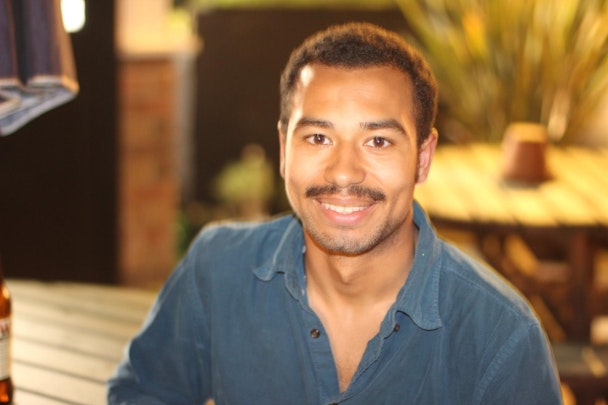Adland isn’t meeting its responsibilities to generation Z talent
Advertising agencies are finding it harder than ever to attract young recruits. Shaun Wood, a junior creative at M&C Saatchi, gives the view from the ground floor.

Shaun Wood, junior creative at M&C Saatchi
After four years of trying to get a job with progression opportunities, I’ve miraculously landed a role at M&C Saatchi as a junior creative. I’m relieved and elated, but alongside new challenges such as tackling isolation in a workplace where remote working is the norm, I feel a strong sense of survivor’s guilt.
I was recruited off the back of M&C Saatchi’s Open House scheme. It’s a totally free, eight-week remote training program that’s open to anyone who wants to learn more about a career in advertising. The advice, opportunities and connections born out of the program have been critical to me personally being able to overcome some of the employment barriers facing my generation – barriers that have been worsened by the pandemic.
A study in February showed that graduate vacancies in the broader media industry (which includes the advertising sector) were down by 18.7% compared with 2019. And in May 2020, 26% of final-year students had lost internships, with a further 28% having graduate job offers deferred or rescinded.
Add into the mix a 60% rise in graduate applications, and you get the kind of shocker of an interview that I attended in 2020. It was for a trainee researcher role at a TV production company, advertising for BAME talent. I thought I had a fighting chance and spent two days preparing.
God knows why they didn’t tell any of the applicants that it was going to be a fourteen-person group Zoom interview in which each participant was only given 30 seconds to rattle off their skills, experience, suitability – and why they ‘really wanted the role.’ Demoralizing, enraging and the inevitable rejection email proved it was also an utter waste of time.
Fast-forward a year or so and I can say with relief that I’ve landed a sought-after opportunity. But it hasn’t filled me with the satisfaction that I hoped for, because so many of my peers are still struggling for entry-level employment.
And they’re projected to continue to struggle for the next few years. I only just about managed to keep myself motivated through a year and a half on Universal Credit by occupying myself with creative projects. But I can’t imagine how my peers who feel like they can’t get a sense of purpose or progress ‘riding solo’ will be feeling in a few years’ time.
So many agencies are still looking for work experience in their entry-level candidates. This has now become a running joke for my generation – a classic catch-22 that employers use to avoid their responsibility toward the entry-level work force. We’re sick of it. How are we supposed to get experience if you won’t give us experience opportunities? It makes no sense.
Perfect storm in talent pipeline
So, with advertising across all media set for record-breaking double-digit growth, and the advertising industry experiencing a major talent shortage, what’s adland’s workforce outlook? Well, a ‘perfect storm’ has been on the horizon for some time – in fact it’s been brewing in education for at least a decade.
Since 2010, fewer students have been taking arts GCSEs and A-levels, reaching record lows year-on-year. These dwindling figures have direct impacts on careers where creativity is the stock in trade. And adland is simply not pulling its weight enough when it comes to reaching new talent, approaching 10 fewer universities than the top outreaching industries.
But it’s not just about reaching the same old pool of graduate talent. Organizations need to follow through on rhetoric about diversity, equity and inclusion to redress the ‘talent crunch.’ They need to ensure that agencies are more representative of the diverse communities their clients are aiming to engage with.
In order to do this, agencies need to deliver educational initiatives that influence and inform the next generation of marketers. They need to provide training in order to get talent ready for the industry. They need to inspire them with purpose-led programs, include them within the workplace with networking opportunities and listen to them with feedback and discussion groups.
Fortunately for me, M&C Saatchi has been leading the charge. It has reached thousands of people (including myself) through Open House, Saturday School, Mentoring Black Business and Carbon Academy – which connects with female inner London sixth formers.
Advertising and art
Alongside the need for schemes that funnel directly into advertising, agencies have a responsibility to the arts industry. Artists and their works of art contribute to the lifeblood of advertising, through inspiration, partnerships and straight-up talent. But it’s often not viable to go into the arts if you’re from a less fortunate socio-economic background.
I was lucky. I benefited from music scholarships as a child, which opened a lot of doors. They gave me the confidence, social mobility and cultural capital to explore a whole range of disciplines. But not enough people are so lucky. Agencies need to find new ways to inspire and support artists’ careers with funding, mentorships and prizes.
M&C Saatchi Group has recently announced its new Principal Patronage of the Saatchi Gallery, which I hope will contribute to turning the tide. Hopefully it can nurture the next Tracey Emin or whatever other artist whose work my dad doesn’t like.
If organizations and agencies respond with significant action to the needs of young workers, there’s a hope unemployment figures will go down. And if that happens, maybe I can stop feeling so guilty for having managed to get my foot in the door.
Shaun Wood is a junior creative at M&C Saatchi.
